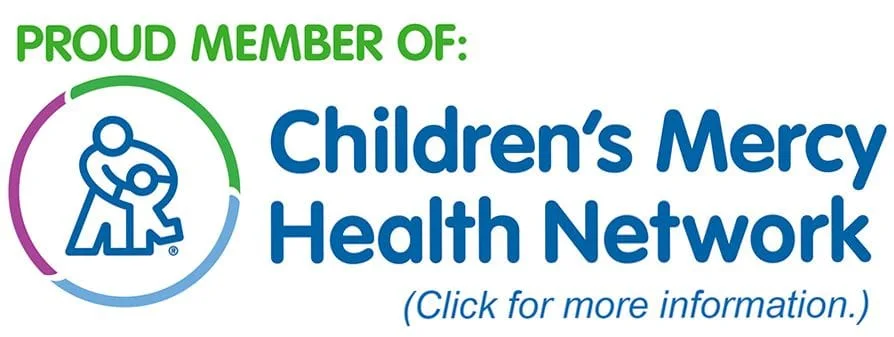The road to a bright smile begins long before the first tooth appears. Parents play a big part in helping their children develop healthy teeth. Early monitoring by your child's doctor and dentist is important.
Read MoreCall Us Today

-
Children’s Dental Health: What You Need to Know
Category: safety_and_prevention
-
Clean Intermittent Catheterization for Boys
Category: common_illnesses_and_conditions
Information from the American Academy of Pediatrics that will help you understand the basics of clean intermittent catherization (CIC).
Read More -
Clean Intermittent Catheterization for Girls
Category: common_illnesses_and_conditions
Information from the American Academy of Pediatrics that will help you understand the basics of clean intermittent catherization (CIC).
Read More -
Common Childhood Infections
Category: newborns_infants_and_toddlers
Most infections are caused by germs called viruses and bacteria. While you may be able to keep germs from spreading, you can't always keep your child from getting sick. It is important for parents to know how to keep their children healthy and what to do when they get sick. Read on to learn more from
Read More -
Constipation and Your Child
Category: common_illnesses_and_conditions
Bowel patterns vary from child to child just as they do in adults. What's normal for your child may be different from what's normal for another child. Most children have bowel movements 1 or 2 times a day. Other children may go 2 to 3 days or longer before passing a normal stool.
Read More -
Croup
Category: newborns_infants_and_toddlers
Croup is an infection that makes the inside of your child's throat swell up. This makes it hard for your child to breathe. It can be scary for both parents and children.
Read More -
Croup and Your Young Child
Category: newborns_infants_and_toddlers
Croup is a common illness in young children. It can be scary for parents as well as children. Read on for more information from the American Academy of Pediatrics about croup, including types, causes, symptoms, and treatments.
Read More -
Croup: When Your Child Needs Hospital Care
Category: common_illnesses_and_conditions
Croup is a common illness that affects the airways, making it hard for a child to breathe. It's most common in toddlers but can affect children between 6 months and 12 years of age. Another symptom is a loud barking cough that is worse at night. Trouble breathing and the barking cough can be scary for
Read More -
Crying and Your Baby: How to Calm a Fussy or Colicky Baby
Category: newborns_infants_and_toddlers
Babies cry for different reasons. Crying is one way babies try to tell us what they need. They may be hungry, have a soiled diaper, or just want a little attention. (See checklist at the bottom.) If a crying baby cannot be comforted, the cause may be colic. Read on about colic and ways to calm a crying
Read More -
Diaper Rash and Your baby
Category: newborns_infants_and_toddlers
Most babies get diaper rash, but it is usually not serious. Read on to find out more about what causes diaper rash and how to treat it.
Read More -
Diarrhea and Your Child
Category: newborns_infants_and_toddlers
Diarrhea can be acute (lasts a short time) or chronic (lasting more than 2 weeks). Here is information from the American Academy of Pediatrics (AAP) about acute diarrhea, as well as how to manage the symptoms, and how to help reduce your child’s chances of getting diarrhea.
Read More -
Diarrhea—Child Care and Schools
Category: common_illnesses_and_conditions
An illness in which someone develops more watery and frequent stools than is typical for that person. Diarrhea can be caused by changes in diet, such as drinking excessive amount of fruit juice, eating more than the usual amounts of certain foods, and the use of some medications. Diarrhea also can be
Read More -
Ear Infection—Child Care and Schools
Category: common_illnesses_and_conditions
There are 2 common types of ear infections: otitis media (middle ear infection) and otitis externa (swimmer’s ear). Most ear infections of young children occur in the middle ear.
Read More -
Eczema (Atopic Dermatitis) and Your Child
Category: newborns_infants_and_toddlers
Eczema is a chronic skin problem that causes dry, red, itchy skin. It is also called atopic dermatitis or AD. Anyone can get eczema, but it is most common in babies to young adults.
Read More -
Febrile Seizures
Category: newborns_infants_and_toddlers
In some children, fevers can trigger seizures. Febrile seizures occur in 2% to 5% of all children between the ages of 6 months and 5 years. Seizures, sometimes called “fits” or “spells,” are frightening, but they usually are harmless. Read on for information from the American Academy of Pediatrics
Read More -
Fever and Your Child
Category: newborns_infants_and_toddlers
A fever is usually a sign that the body is fighting an illness or infection. Fevers are generally harmless. In fact, they can be considered a good sign that your child's immune system is working and the body is trying to heal itself. While it is important to look for the cause of a fever, the main purpose
Read More
Our Location
Find us on the map
Hours of Operation
Our Regular Schedule
Monday:
8:00 am-5:00 pm
Tuesday:
8:00 am-5:00 pm
Wednesday:
8:00 am-5:00 pm
Thursday:
8:00 am-5:00 pm
Friday:
8:00 am-5:00 pm
Saturday:
Closed
Sunday:
Closed

